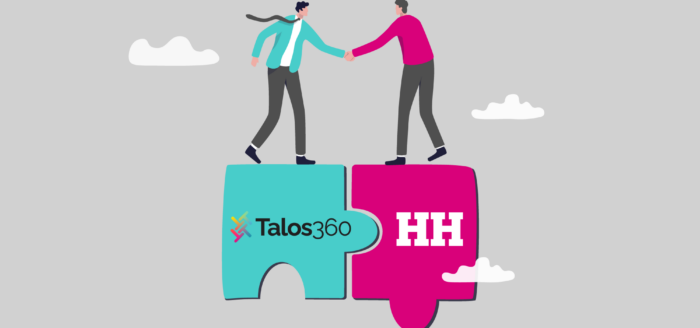
They say the devil’s in the detail and that couldn’t be truer of the process of hiring, welcoming and inducting a new employee, otherwise known as onboarding.
Valuing every individual isn’t actual brain surgery, but it does involve a pretty meticulous approach to planning to get it spot-on. The good news is once you’ve created the template you can use it every time, so a bit of work up-front will pay off in the long run..
But where to start?
Hiring candidates
You won’t yet know which of the shiny, new applicants for your role will actually be hired. So, every, single one should get five-star treatment from their very first point of contact with you.
It all starts with the job advert. Think about it: it’s the first thing the candidate sees. It sends out a powerful message about your organisation. It needs to be well-written and it must accurately portray the role. Need more help? Our guide to writing a killer job advert will have it sorted.
After that, keep three words at the forefront of your mind: professional, friendly, prompt. In this candidate-scarce climate, competition is rife and expectations are high. Try to treat applicants as you would valuable clients or customers. It’s not as hard as you think:
- Review all the applicant touchpoints – website, phone calls, emails, LinkedIn – and make the experience as slick as you can. Acknowledge every application with an automated message, at the very least, and log everything on an applicant tracking system (ATS), so no-one falls through the net.
- Give candidates as much information about the hiring process as possible – indicate how long it will take and how they’ll hear from you. It can be useful to give them one point of contact throughout so that candidates build a connection to the company.
- Remember the old-adage that you interview the interviewer too. Sell candidates the benefits of the role and anticipate their questions.
- Be open about the background checks you’ll run and when you’ll follow up references. Because who wants any nasty surprises?
- Give them constructive feedback about their performance, but even if you don’t hire them, ask for their feedback too. How could you improve the process? What more could your company offer? Leave them with a good lasting impression of your organisation. You never know when you might see them again…
Give candidates as much information about the hiring process as possible – indicate how long it will take and how they’ll hear from you. It can be useful to give them one point of contact throughout so that candidates build a connection to the company.
Making offers
We’ve got the full lowdown on how to make offers here but, in a nutshell, tread carefully. Kind of like tiptoeing on eggshells made of glass.
Make contact by phone, then follow up in writing and be respectful when negotiating salary; it can sometimes hit egos hard. Try to be accommodating with start dates too.
During the notice period
Don’t let your new recruit wander around the notice-period wilderness, especially if it’s a long one. You run the risk of them deciding to stay with their current employer.
Don’t let your new recruit wander around the notice-period wilderness, especially if it’s a long one. You run the risk of them deciding to stay with their current employer.
Instead, use this time to send useful information like site maps, help them to make transport arrangements, ask about equipment preferences and get it ordered in.
While you sort the rest of the logistics – log-on details, access passes, phones – your new recruit could be reading the employee handbook or checking out the org chart. Ensure there’s always someone available to answer questions during this crucial period.
The big things are important, but it’s the little things that make the difference, so check their IT and equipment is working properly before they arrive, arrange for their workspace to be cleaned and tidied and encourage team members to drop a quick line over to say ‘hi’.
The first day
Handle this with kid gloves: it’s so important. You don’t need the full balloons and party poppers, but at least have smiley team-members ready to welcome their new colleague.
Show them around the place – meeting rooms, toilets, break-out areas – and, we’re British so, for goodness sake, someone make them a brew.
Run them through their schedule for the day. A meeting with their line manager is a must to understand their role and set expectations. The formal HR meeting should happen today too, covering payroll, entitlements, benefits, key policies and culture. If you’ve appointed a mentor, let them meet them right away.
Run them through their schedule for the day. A meeting with their line manager is a must to understand their role and set expectations. The formal HR meeting should happen today too, covering payroll, entitlements, benefits, key policies and culture. If you’ve appointed a mentor, let them meet them right away.
Take them out to lunch, even if it’s just a quick sandwich at the local café.
But don’t swamp them. Allow a bit of breathing space to absorb information and set up their online accounts.
The first week
Ensure the ‘customer’ experience doesn’t slide after the first day. Give your employee a worthwhile first task to get their teeth into and help them navigate their way around the company.
Schedule meetings with key teams they’ll interact with, but also with other parts of the organisation, so they can understand your full business offering and how you operate.
Set clear goals for the first 3, 6 and 12 months at a one-to-one meeting. Link these to the company’s objectives so they understand their role in achieving them. Give lots of feedback and praise, make sure they know who to go to with questions (which you’ll actively encourage) and never, ever make them feel like a burden.
The first 3 months
It doesn’t stop there. Employee retention is an all-too-real problem so you can’t afford to relax just yet. Keep the weekly one-to-ones going to help your new colleague feel valued and supported.
Employee retention is an all-too-real problem so you can’t afford to relax just yet. Keep the weekly one-to-ones going to help your new colleague feel valued and supported.
Formally review progress at 30 days and 90 days and make sure any teething problems are ironed out quickly.
Finally, your new hire is one of your greatest onboarding assets – ask them for honesty about the process so you can make improvements for the next person.
___________________________________________________________________
Struggling to fill vacancies? Try Hiring Hub. We help the UK’s leading companies fill jobs fast (in an average of just 20 days). Create your account here.


